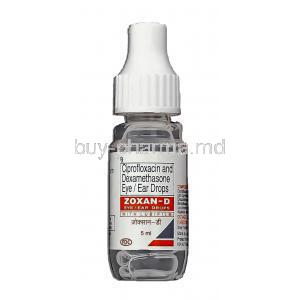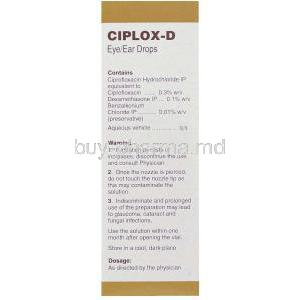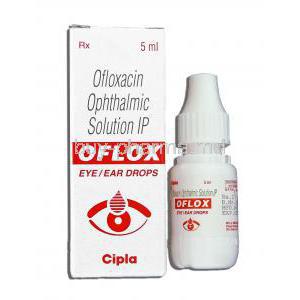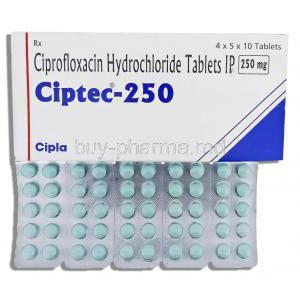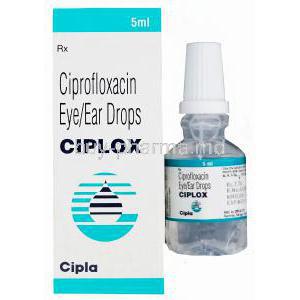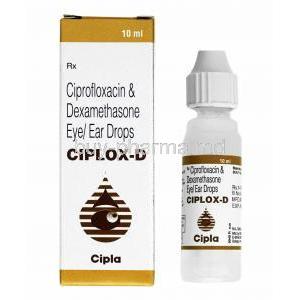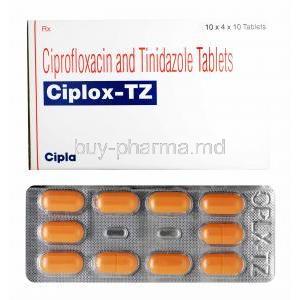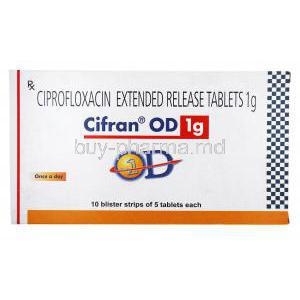Introduction to Ciprofloxacin/Dexamethasone
In the realm of medical therapeutics, the Ciprofloxacin/Dexamethasone combination stands out as a versatile treatment option, particularly renowned for its efficacy in addressing a spectrum of ear and eye ailments. This amalgamation of two potent pharmaceutical agents represents a significant advancement in pharmacotherapy, offering a synergistic approach to combat various infections and inflammatory conditions.
Within the annals of pharmaceutical history, the genesis of Ciprofloxacin/Dexamethasone intertwines with the evolution of antibiotic and corticosteroid therapies. The conceptualization and subsequent development of this combination stem from a concerted effort to enhance treatment outcomes and mitigate the burden of infectious and inflammatory diseases.
Uses of Ciprofloxacin/Dexamethasone
- Treatment of Otitis Externa
- Management of Otitis Media with Tympanostomy Tubes
- Adjunctive Therapy for Acute Otitis Media
- Off-label Use in Ophthalmology: Conjunctivitis and Corneal Ulcers
The multifaceted utility of Ciprofloxacin/Dexamethasone encompasses various clinical scenarios, each demanding a tailored therapeutic approach. These include:
- Treatment of Otitis Externa: Ciprofloxacin/Dexamethasone proves highly effective in combating external ear canal infections, offering both antimicrobial and anti-inflammatory actions to alleviate symptoms and promote healing.
- Management of Otitis Media with Tympanostomy Tubes: In cases where individuals have undergone tympanostomy tube placement, this combination therapy aids in preventing and treating infections of the middle ear, thereby preserving auditory function.
- Adjunctive Therapy for Acute Otitis Media: Ciprofloxacin/Dexamethasone serves as a valuable adjunct to standard antibiotic regimens in the management of acute otitis media, exerting synergistic effects to expedite resolution of inflammation and infection.
- Off-label Use in Ophthalmology: Beyond its established indications, clinicians may employ Ciprofloxacin/Dexamethasone off-label in the treatment of ocular conditions such as conjunctivitis and corneal ulcers, capitalizing on its broad-spectrum antimicrobial and anti-inflammatory properties.
How Ciprofloxacin/Dexamethasone Works
The therapeutic efficacy of Ciprofloxacin/Dexamethasone emanates from the distinct mechanisms of action exerted by its constituent agents:
- Mechanism of Action of Ciprofloxacin: Ciprofloxacin, a fluoroquinolone antibiotic, disrupts bacterial DNA replication and transcription, thereby impeding microbial growth and proliferation.
- Mechanism of Action of Dexamethasone: Dexamethasone, a potent corticosteroid, exerts anti-inflammatory effects by inhibiting the expression of pro-inflammatory cytokines and mediators, thereby attenuating the immune response and mitigating tissue inflammation.
- Synergistic Effects of Combination Therapy: The synergism between Ciprofloxacin and Dexamethasone engenders a dual-action approach, wherein antimicrobial and anti-inflammatory mechanisms converge to optimize therapeutic outcomes, expedite symptom resolution, and promote tissue healing.
Dosage and Administration Guidelines
Optimal dosing and proper administration techniques are paramount to the efficacy and safety of Ciprofloxacin/Dexamethasone therapy:
- Adult Dosage Recommendations: Adult patients typically receive a prescribed dosage regimen tailored to the specific indication and severity of the condition, with dosing frequency and duration determined by the treating physician.
- Pediatric Dosage Guidelines: Pediatric dosing of Ciprofloxacin/Dexamethasone adheres to age-appropriate recommendations, with careful consideration given to weight-based dosing adjustments to ensure therapeutic efficacy while minimizing the risk of adverse effects.
- Proper Administration Techniques: Whether administered as otic drops for ear conditions or ophthalmic drops for ocular conditions, meticulous attention to proper administration techniques, including appropriate positioning and dosing intervals, is imperative to optimize drug delivery and therapeutic outcomes.
Composition of Ciprofloxacin/Dexamethasone
The chemical composition and formulation characteristics of Ciprofloxacin/Dexamethasone play a pivotal role in determining its pharmacokinetic and pharmacodynamic properties:
- Chemical Properties and Molecular Structure: Ciprofloxacin and Dexamethasone exhibit distinct chemical structures and physicochemical properties, which govern their solubility, stability, and bioavailability within pharmaceutical formulations.
- Pharmaceutical Formulations and Excipients: Various pharmaceutical formulations of Ciprofloxacin/Dexamethasone, including ear drops and ophthalmic solutions, incorporate specific excipients and vehicle components to optimize drug delivery, enhance stability, and minimize local irritation.
Storage and Shelf Life
Proper storage conditions are essential to preserve the stability and efficacy of Ciprofloxacin/Dexamethasone formulations throughout their designated shelf life:
- Proper Storage Conditions to Maintain Stability: Storage at controlled room temperature, away from excessive heat and moisture, helps safeguard the chemical integrity and potency of Ciprofloxacin/Dexamethasone formulations, thereby ensuring optimal therapeutic outcomes.
- Shelf Life Considerations for Different Formulations: Depending on the specific formulation and packaging, Ciprofloxacin/Dexamethasone products may exhibit varying shelf lives, necessitating adherence to expiration dates and proper disposal of expired or unused medication to mitigate the risk of therapeutic failure or adverse effects.
Interactions with Other Medications
Awareness of potential drug interactions is crucial to mitigate the risk of adverse effects and ensure the safe and effective use of Ciprofloxacin/Dexamethasone:
- Drug-Drug Interactions to be Aware of: Concurrent use of Ciprofloxacin/Dexamethasone with certain medications, such as systemic corticosteroids or drugs that prolong the QT interval, may potentiate adverse effects or alter pharmacokinetic parameters, necessitating dose adjustments or close monitoring.
- Potential Interference with Laboratory Tests: Ciprofloxacin/Dexamethasone therapy may interfere with certain laboratory tests, including urine glucose tests and culture-based microbiological assays, leading to erroneous results and clinical misinterpretation.
Side Effects of Ciprofloxacin/Dexamethasone
While Ciprofloxacin/Dexamethasone combination therapy is generally well-tolerated, certain individuals may experience adverse reactions, ranging from mild to severe. Understanding these potential side effects is crucial for both healthcare providers and patients.
Common Side Effects: Local and Systemic Reactions
Common side effects associated with Ciprofloxacin/Dexamethasone therapy encompass a spectrum of local and systemic reactions, which may manifest during treatment. These include:
- Local Irritation: Patients may experience transient irritation or discomfort at the site of application, particularly with otic or ophthalmic formulations. This typically resolves spontaneously and does not necessitate discontinuation of therapy.
- Systemic Absorption: Systemic absorption of corticosteroids such as Dexamethasone can occur following topical administration, potentially leading to systemic side effects such as adrenal suppression, hyperglycemia, or immunosuppression, especially with prolonged use or in susceptible individuals.
- Superinfection: Prolonged or indiscriminate use of antibiotics like Ciprofloxacin may predispose individuals to superinfections caused by drug-resistant pathogens or opportunistic microorganisms, necessitating vigilant monitoring and appropriate management.
Rare but Serious Adverse Reactions
Although rare, certain serious adverse reactions have been reported with Ciprofloxacin/Dexamethasone therapy, warranting prompt recognition and management to prevent complications. These may include:
- Anaphylaxis: Anaphylactic reactions, characterized by severe allergic manifestations such as angioedema, bronchospasm, and hypotension, have been reported following exposure to Ciprofloxacin/Dexamethasone formulations, necessitating immediate medical intervention and discontinuation of therapy.
- Tendon Rupture: Fluoroquinolone antibiotics like Ciprofloxacin have been associated with an increased risk of tendon ruptures, particularly in elderly patients or those concurrently receiving corticosteroid therapy, highlighting the importance of cautious use and vigilant monitoring for tendon-related adverse events.
- Ocular Complications: Prolonged use of corticosteroid-containing ophthalmic formulations may predispose individuals to ocular complications such as glaucoma, cataracts, or delayed wound healing, necessitating regular ophthalmic assessments and consideration of alternative therapies.
Warnings and Precautions
Given the potential for adverse effects and safety concerns associated with Ciprofloxacin/Dexamethasone therapy, healthcare providers must be cognizant of relevant warnings and precautionary measures to ensure safe and effective use of these medications.
Black Box Warnings and Regulatory Alerts
The U.S. Food and Drug Administration (FDA) has issued black box warnings and regulatory alerts pertaining to the use of Ciprofloxacin and Dexamethasone, highlighting specific safety concerns and prescribing considerations. These warnings may include:
- Fluoroquinolone-Associated Tendinopathy: Fluoroquinolone antibiotics such as Ciprofloxacin carry a black box warning regarding the risk of tendinopathy and tendon rupture, particularly in elderly patients or those receiving concurrent corticosteroid therapy.
- Ocular Adverse Effects: Ophthalmic corticosteroid formulations containing Dexamethasone may be associated with an increased risk of ocular adverse effects, including elevated intraocular pressure, glaucoma, and cataracts, necessitating judicious use and close monitoring.
Precautionary Measures for Safe Use
To mitigate the risk of adverse effects and ensure safe and effective use of Ciprofloxacin/Dexamethasone, healthcare providers should adhere to precautionary measures and prescribing guidelines, which may include:
- Patient Education: Providing patients with comprehensive information regarding the benefits, risks, and proper administration techniques of Ciprofloxacin/Dexamethasone therapy is essential to promote adherence and minimize the likelihood of adverse events.
- Monitoring and Surveillance: Regular monitoring of patients receiving Ciprofloxacin/Dexamethasone therapy, including clinical assessments, laboratory tests, and ophthalmic evaluations, facilitates early detection of adverse reactions and enables timely intervention.
Contraindications and Special Populations
While Ciprofloxacin/Dexamethasone combination therapy is indicated for various infectious and inflammatory conditions, certain contraindications and considerations must be taken into account, particularly in special populations.
Conditions and Situations Where Use is Contradicted
Contraindications to the use of Ciprofloxacin/Dexamethasone may include:
- Hypersensitivity: Individuals with a history of hypersensitivity reactions to fluoroquinolones, corticosteroids, or any component of the formulation should avoid Ciprofloxacin/Dexamethasone therapy due to the risk of allergic manifestations.
- Tendon Disorders: Patients with a history of tendon disorders or previous tendon ruptures associated with fluoroquinolone use should refrain from Ciprofloxacin therapy, as it may exacerbate tendon-related complications.
Considerations for Elderly Patients, Pregnant Women, and Nursing Mothers
Special considerations apply to certain populations, including elderly patients, pregnant women, and nursing mothers, where the risks and benefits of Ciprofloxacin/Dexamethasone therapy must be carefully evaluated:
- Elderly Patients: Advanced age is associated with an increased risk of adverse drug reactions and drug interactions, necessitating cautious use and dose adjustments in elderly patients receiving Ciprofloxacin/Dexamethasone therapy.
- Pregnant Women: The safety of Ciprofloxacin/Dexamethasone during pregnancy is not well-established, and its use should be reserved for situations where the potential benefits outweigh the risks, with careful consideration given to fetal and maternal health.
- Nursing Mothers: Ciprofloxacin and Dexamethasone are excreted in human milk, raising concerns about potential adverse effects on the nursing infant. Therefore, caution is warranted when administering Ciprofloxacin/Dexamethasone to breastfeeding mothers, with consideration given to alternative therapies or cessation of breastfeeding.
Overdosage and Handling Precautions
Although overdosage with Ciprofloxacin/Dexamethasone is rare, inadvertent ingestion or excessive topical application may occur, necessitating appropriate management and preventive measures to minimize the risk of adverse outcomes.
Symptoms and Management of Overdosage
Signs and symptoms of Ciprofloxacin/Dexamethasone overdosage may vary depending on the route of administration and the extent of exposure. Management strategies may include:
- Supportive Care: Symptomatic management and supportive care are the mainstays of treatment for Ciprofloxacin/Dexamethasone overdosage, with emphasis on monitoring vital signs, fluid resuscitation, and correction of electrolyte imbalances.
- Gastric Lavage: In cases of oral ingestion, gastric lavage may be considered to remove unabsorbed medication from the gastrointestinal tract and prevent further systemic absorption, particularly if ingestion occurred within a short timeframe.
Proper Disposal and Handling Practices for Unused Medication
To prevent inadvertent exposure and environmental contamination, proper disposal and handling practices for unused Ciprofloxacin/Dexamethasone medication are essential:
- Disposal Guidelines: Unused or expired Ciprofloxacin/Dexamethasone formulations should be disposed of in accordance with local regulations and guidelines, which may include community drug take-back programs or household medication disposal protocols.
- Environmental Considerations: Proper disposal of pharmaceutical waste helps minimize the risk of environmental contamination and potential adverse effects on ecosystems, underscoring the importance of responsible medication disposal practices.



